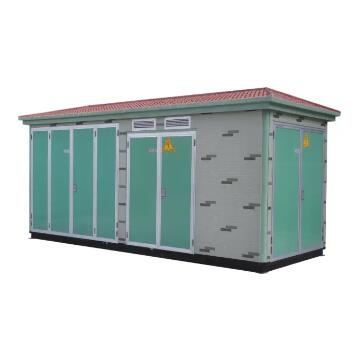Why Prefabricated Combined Transformer Substations Are the Future of Power Distribution
2024-08-22
As the global demand for electricity continues to rise, the power distribution industry is under increasing pressure to deliver efficient, reliable, and scalable solutions. Prefabricated Combined Transformer Substations represent a significant advancement in this field, offering a streamlined approach to power distribution that meets the needs of modern infrastructure. In this blog, we’ll explore why these substations are considered the future of power distribution and how they can benefit various sectors.
The Evolution of Power Distribution
Traditionally, power distribution has relied on large, site-built substations that require extensive civil engineering work, significant land use, and lengthy installation times. While effective, this approach is increasingly challenged by the need for more agile, space-saving, and cost-efficient solutions. This is where Prefabricated Combined Transformer Substations come into play.
These modern substations are designed to address the limitations of traditional setups. By integrating all necessary components into a single, compact unit, they offer a more flexible and scalable solution that can be deployed quickly and with minimal disruption.
Key Advantages of Prefabricated Combined Transformer Substations
1. Speed of Deployment: One of the most significant advantages of prefabricated substations is the speed at which they can be deployed. Unlike traditional substations, which can take months or even years to build and commission, prefabricated units can be installed and operational in a fraction of the time. This is particularly beneficial for projects with tight deadlines or where rapid deployment is critical.
2. Reduced Land Use: As urban areas continue to grow, the availability of land for infrastructure projects becomes increasingly limited. The compact design of Prefabricated Combined Transformer Substations means they require significantly less space than traditional substations, making them ideal for urban environments where land is at a premium.
3. Lower Total Cost of Ownership: While the initial investment in a prefabricated substation may be comparable to or slightly higher than a traditional substation, the long-term savings are substantial. Reduced installation time, lower civil works costs, and minimal maintenance requirements all contribute to a lower total cost of ownership. Additionally, the durability and reliability of these units mean fewer repairs and replacements over time.
4. Flexibility and Scalability: As energy needs evolve, the ability to scale and adapt is crucial. Prefabricated Combined Transformer Substations offer unparalleled flexibility, allowing for easy upgrades and expansions. Whether it’s increasing capacity, integrating renewable energy sources, or adapting to new technologies, these substations can be modified to meet changing requirements without the need for major infrastructure changes.
5. Enhanced Safety and Reliability: Prefabricated substations are built in controlled environments, ensuring consistent quality and adherence to strict safety standards. This results in a more reliable and safer power distribution solution, reducing the risk of outages and accidents. The enclosed design also offers better protection against environmental factors, further enhancing reliability.
Why Industries are Adopting Prefabricated Combined Transformer Substations
- Urban Development: With the rapid growth of cities, the demand for compact and efficient power distribution solutions has never been higher. Prefabricated substations are becoming the go-to choice for urban developers looking to integrate power distribution into limited spaces.
- Renewable Energy: As the world shifts towards renewable energy, the need for adaptable and scalable power distribution systems is increasing. Prefabricated substations are well-suited for renewable energy projects, where they can be easily integrated into wind farms, solar arrays, and other renewable installations.
- Industrial Applications: For industrial sites, downtime can have significant financial consequences. The reliability and quick deployment of prefabricated substations make them ideal for industrial applications where uninterrupted power supply is crucial.
- Emergency and Temporary Solutions: In disaster recovery scenarios or temporary installations, the ability to quickly deploy a power distribution solution is essential. Prefabricated substations can be rapidly deployed to provide immediate power, making them invaluable in emergency situations.
Conclusion
The future of power distribution is here, and it’s prefabricated. Prefabricated Combined Transformer Substations offer a modern, efficient, and flexible solution that addresses the challenges of traditional power distribution methods. As industries continue to evolve and the demand for reliable, scalable power solutions grows, these substations will play an increasingly important role in shaping the energy landscape. Whether in urban developments, renewable energy projects, or industrial applications, Prefabricated Combined Transformer Substations are set to become the standard for power distribution in the 21st century.



